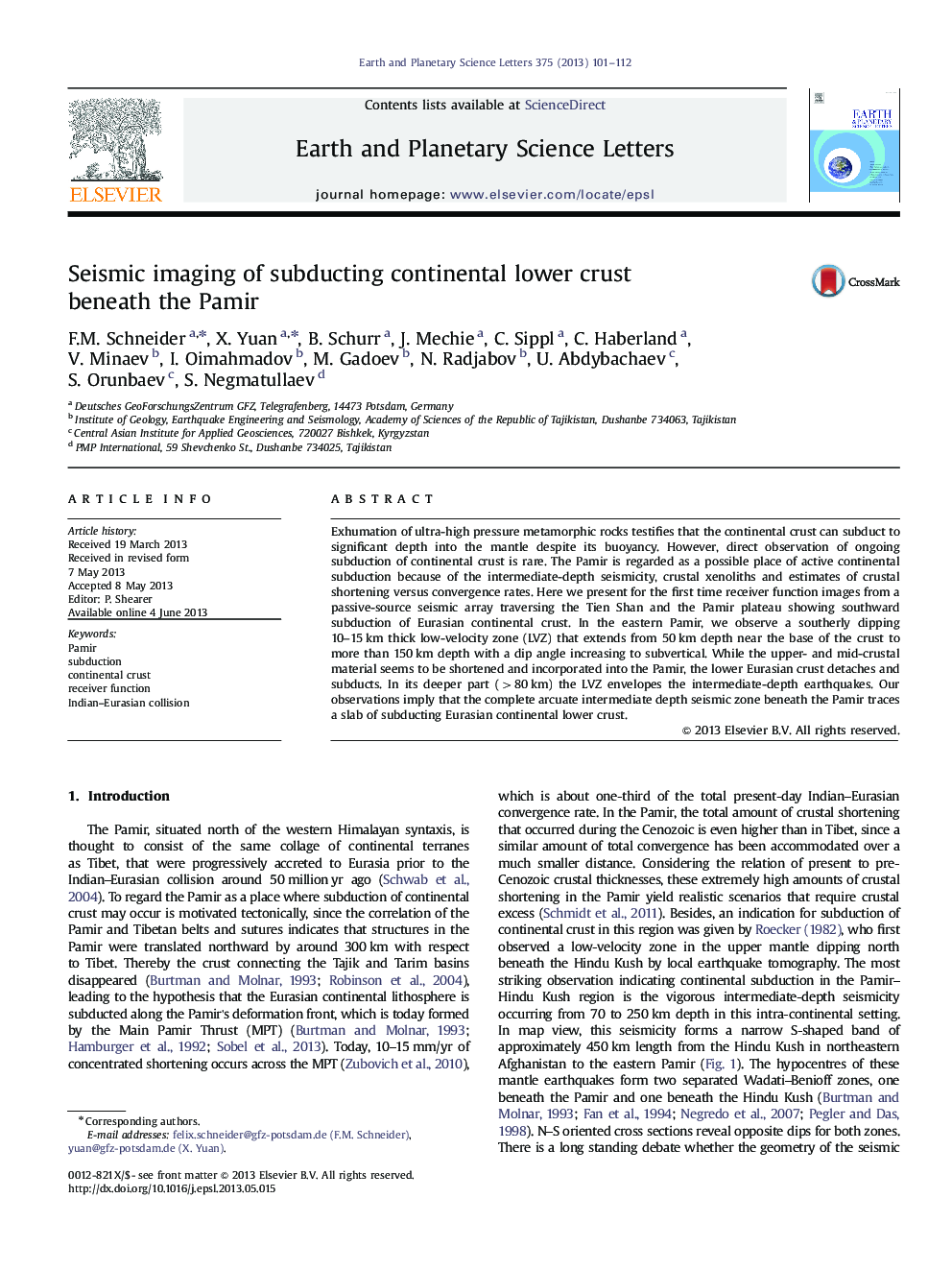| Article ID | Journal | Published Year | Pages | File Type |
|---|---|---|---|---|
| 6430189 | Earth and Planetary Science Letters | 2013 | 12 Pages |
â¢We operated a modern seismic array in the Pamir, a key area for Indo-Asian collision.â¢We constructed receiver function cross sections traversing Tien Shan and Pamir.â¢We used a modified CCP stacking to image strongly dipping interfaces.â¢We observed subduction of Eurasian continental crust beneath the Pamir.â¢A south-dipping low-velocity zone coincides with the intermediate-depth seismicity.
Exhumation of ultra-high pressure metamorphic rocks testifies that the continental crust can subduct to significant depth into the mantle despite its buoyancy. However, direct observation of ongoing subduction of continental crust is rare. The Pamir is regarded as a possible place of active continental subduction because of the intermediate-depth seismicity, crustal xenoliths and estimates of crustal shortening versus convergence rates. Here we present for the first time receiver function images from a passive-source seismic array traversing the Tien Shan and the Pamir plateau showing southward subduction of Eurasian continental crust. In the eastern Pamir, we observe a southerly dipping 10-15Â km thick low-velocity zone (LVZ) that extends from 50Â km depth near the base of the crust to more than 150Â km depth with a dip angle increasing to subvertical. While the upper- and mid-crustal material seems to be shortened and incorporated into the Pamir, the lower Eurasian crust detaches and subducts. In its deeper part (>80Â km) the LVZ envelopes the intermediate-depth earthquakes. Our observations imply that the complete arcuate intermediate depth seismic zone beneath the Pamir traces a slab of subducting Eurasian continental lower crust.
Graphical AbstractDownload high-res image (257KB)Download full-size image
